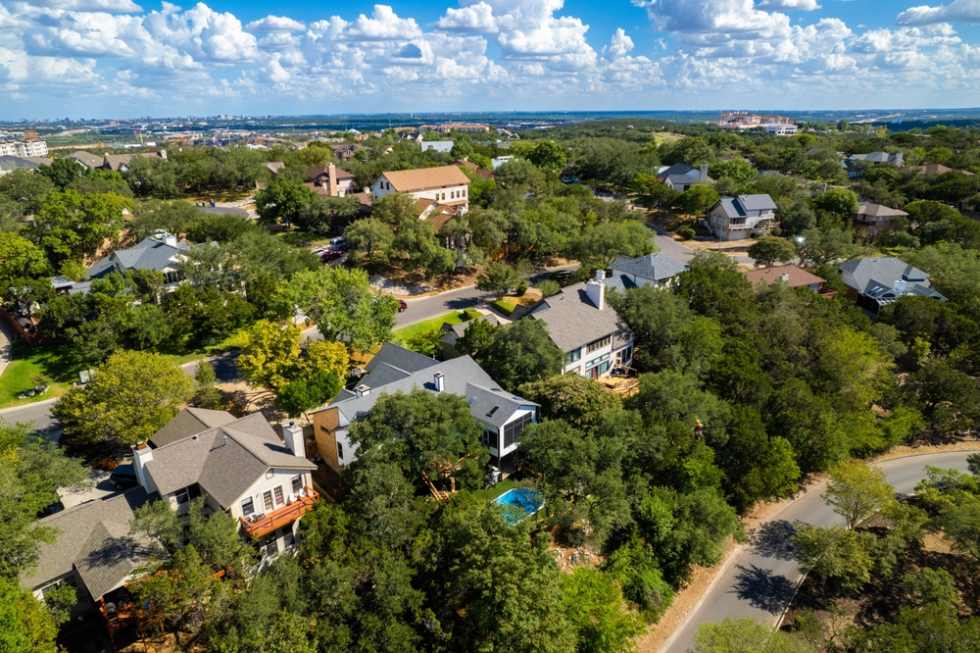Westgrove
- 67 units available
- Studio • 1 bed • 2 bed • 3 bed
- Amenities
In unit laundry, Patio / balcony, Pet friendly, Stainless steel, Gym, Pool + more

Yes, Houston is affordable for renters in 2025. With a median rent of $1,297, compared to the national average of $1,401, renters in Houston save about 20% on housing. Transportation costs are also 6% lower than the national average, largely due to the city’s transportation system. When factoring in total living expenses, Houston remains one of the more budget-friendly major metros in the U.S., especially for renters looking to get more space for their money without sacrificing access to jobs, restaurants, or cultural attractions.
Houston’s rental market is holding steady in 2025. As of mid-year, the median asking rent sits at $1,297, just below the national average of $1,401. That same $1,297 stretches further in Houston than in most coastal metros (think 1,200+ square feet in many neighborhoods).
After a surge of multifamily construction in 2023–2024, rent growth plateaued, and some landlords began offering move-in incentives, especially in Westchase and Energy Corridor complexes. But those deals are fading as new construction slows and available units get scooped up faster.
Rents in Houston rose a bit more than 1% in the first half of 2025, outpacing the national increase of 0.8%. In June, rents didn’t tick up at all, though Houston is still among the top 25 fastest-growing rental markets nationwide.
Experts predict continued moderate growth of around 2–3% annually as demand remains strong, especially from remote workers and young professionals moving south for better cost-of-living options.

Rent in Houston can vary widely depending on location, square footage, and how recently the building was constructed. To give you a sense of what renters are paying today, here’s a quick look at average prices for one- and two-bedroom apartments across the city:
| Bedrooms | Houston Average Rent Price | National Average Rent Price | Savings vs. National (%) |
|---|---|---|---|
| Studio | $1,274 | $1,675 | 23.9% cheaper |
| 1-Bedroom | $1,312 | $1,762 | 25.5% cheaper |
| 2-Bedroom | $1,688 | $2,202 | 23.3% cheaper |
| 3-Bedroom | $2,192 | $2,733 | 19.8% cheaper |
As of July 2025, the average rent in Houston for a 1-bedroom apartment is $1,312. Final pricing depends on several factors. Newer buildings in central neighborhoods like Montrose or the Museum District tend to command higher rates, especially if they include features like secure parking, fitness centers, or in-unit washers and dryers.
Meanwhile, older units or rentals farther from the city core, such as in Alief or Greenspoint, often list for under $1,100. Overall, Houston offers a wide range of price points for renters with different budgets and preferences.
As of July 2025, the average rent for a 2-bedroom apartment in Houston is $1,688, which is 23.3% lower than the national average of $2,202. Two-bedroom units are especially popular with roommates, small families, and renters who want a dedicated office or guest room.
Median rents in Houston are below the national average, making it one of the more accessible big cities for renters, especially given its job market and size.
Here’s how Houston compares in 2025:
| City | Average 1-Bedroom Rent | Cost of Living Index* |
|---|---|---|
| New York, NY | $5,015 | 172.5 |
| San Francisco, CA | $3,461 | 245.5 |
| Atlanta, GA | $1,532 | 113.3 |
| Austin, TX | $1,526 | 129.1 |
| Birmingham, AL | $1,516 | 87 |
| Columbus, OH | $1,454 | 91.4 |
*Cost of Living Index (U.S. average = 100) data sourced from BestPlaces.
Houston comes in under Austin on both rent and living costs, while still delivering the advantages of a large metro: major employers, diverse neighborhoods, and plenty of entertainment. Before you browse listings, keep your budget in check with a few popular rent-to-income rules.
The 30% rule is a longtime budgeting guideline that suggests keeping your rent below 30% of your gross monthly income. If you earn $4,500 a month before taxes, that means spending no more than $1,350 on rent. In a city like Houston, where rental prices can swing widely by neighborhood, this rule can serve as a helpful starting point.
This 50/30/20 method breaks down your after-tax income into three buckets: 50% for needs, 30% for wants, and 20% for savings or debt payments. Rent falls under the “needs” category, alongside groceries, transportation, and insurance. so it shouldn’t take up the entire 50%. If your take-home pay is $4,000 a month, you’d aim to keep all essential expenses, including rent, under $2,000.
This one’s popular with landlords: your gross monthly income should be at least three times the rent. If you’re eyeing a $1,500 apartment in Houston, you’d need to make at least $4,500 per month to qualify under this rule. It’s a quick way for property managers to gauge financial stability.

Overall, Houston’s cost of living is just slightly below the national average, making it an appealing option for renters in 2025. Housing is the main reason. It’s about 3.1% cheaper than the U.S. average, giving renters more space for their money. Groceries and utilities are right around average, while healthcare costs come in a bit lower.
Houston’s utility costs are generally higher than the national average.
The typical electricity bill is around $163 per month, about 8% above the national norm. Gasoline averages roughly $53.35 per month, which is also slightly more than in many other major cities.
| Location | Avg Electricity Cost | Avg Gas Cost | Avg Water Cost | Avg Fuel Cost | Avg Total Cost |
|---|---|---|---|---|---|
| Houston, TX | 163.14 | 53.35 | 38.45 | 0.99 | 255.93 |
| Texas | 168.22 | 32.01 | 51.60 | 0.79 | 252.62 |
| U.S. | 150.93 | 51.12 | 45.52 | 5.57 | 253.14 |
Internet runs around $67.09 per month, and while public transit is on the rise, many people here still rely on their personal vehicles.
Where you live in Houston plays a huge role in how much rent you'll pay. Below is a snapshot of starting prices across popular Houston neighborhoods to help you find the right balance between budget and lifestyle.
| Area | Median 1-Bedroom Rent | Median 2-Bedroom Rent | Best For |
|---|---|---|---|
| Museum District | $1,987 | $2,947 | Best for art enthusiasts and cultural seekers |
| Neartown-Montrose | $1,708 | $2,485 | Best for young professionals, LGBTQ+, and artists |
| University Place | $2,022 | $3,975 | Best for students and young professionals |
| Downtown | $1,899 | $3,141 | Best for family and upscale living |
| Greenway-Upper Kirby | $1,682 | $2,335 | Best for professionals who want luxurious living |
| Great Uptown | $1,620 | $2,303 | Best for budget-conscious renters and families |
Looking to keep rent costs low? Houston has several neighborhoods where average prices come in well below the city median. These areas may trade high-rise glitz for quieter streets or older properties, but they offer serious value.
| Neighborhood | 1-Bedroom Average Rent | 2-Bedroom Average Rent | % Below Average Houston Rent | Best For |
|---|---|---|---|---|
| Eldridge-West Oaks | $1,125 | $1,506 | 12.7% below | Booming residential and commercial growth |
| Alief | $992 | $1,212 | 19.7% below | Cultural diversity and community |
| Southbelt Ellington | $1,053 | $1,343 | 20.4 % below | Suburban lifestyle and good schools |
| Briarforest | $1,087 | $1,489 | 17.7% below | Outdoor recreation and commercial spaces |
Positioned near Houston’s Energy Corridor, Eldridge – West Oaks is ideal for professionals who work west of downtown. Renters here save nearly 13% compared to the city average, and many complexes include pools, gyms, and gated entries.
The area features mid-2000s apartment builds, multiple grocery stores, and quick access to George Bush Park. It’s a practical pick for those looking for amenities and comfort with a suburban feel.
Alief sits in the western part of Houston and is known for its cultural variety and strong community ties. Renters benefit from rates nearly 20% below the city average, making it a budget-conscious pick with a local feel.
Expect diverse dining options, family-run businesses, and several schools and parks nearby. With its multicultural population and well-established neighborhoods, Alief appeals to renters who value community and affordability.
Tucked in southeast Houston near Hobby Airport, Southbelt – Ellington is a great option for renters looking to stretch their dollars. With average 1-bedroom rents about well below the city median, it’s one of the most affordable areas in Houston.
The neighborhood features quiet subdivisions, access to parks like El Franco Lee, and proximity to the Beltway for easy commutes. It's a practical choice for those who want suburban space without leaving the city limits.
Located west of the Galleria area, Briarforest is a green residential neighborhood known for its access to outdoor spots like Terry Hershey Park. Rent prices are about 18% below the city median, and many apartments back up to trails and greenbelts. It’s popular among renters who want a quieter setting with access to bike paths, shopping centers, and Energy Corridor employers. Briarforest combines space and convenience without the premium price tag.
While there are many affordable neighborhoods in Houston, some offer the perks of premium living at a higher price tag. Here are some of the priciest neighborhoods in Houston.
| Neighborhood | 1-Bedroom Average Rent | 2-Bedroom Average Rent | % Above Average Houston Rent | Best For |
|---|---|---|---|---|
| Neartown-Montrose | $2,351 | $3,837 | 76.41% above | Arts, culture, and entertainment hub |
| Greater Heights | $1,820 | $2,516 | 40.48% above | Historic charm and walkability |
| Washington Avenue - Memorial Park | $1,177 | $2,387 | 37.55% above | Natural spaces and trendy nightlife |
| Great Uptown | $1,601 | $2,400 | 23.21% above | Upscale shopping, dining, and entertainment |
Neartown - Montrose is one of Houston’s most eclectic and walkable neighborhoods, known for its arts scene, lively nightlife, and mix of historic bungalows and modern mid-rises.
With galleries, cafés, and bars around every corner, it attracts creatives, young professionals, and anyone looking for character and culture. High demand and central location mean you’ll pay a premium, but for many, the lifestyle is worth it.
A blend of craftsman charm and modern amenities, Greater Heights offers tree-lined streets, bungalow homes, and some of the best brunch spots in the city. It’s a favorite for professionals and young families who want proximity to downtown with a more relaxed pace. High-performing schools and an active local business scene also add to its appeal, making the higher rent prices more justifiable.
This energetic corridor mixes urban fun with outdoor serenity. Washington Avenue is a nightlife destination, filled with trendy spots like B&B Butchers and Clutch Bar. Just to the west, Memorial Park offers 1,500 acres of forested trails, a renovated golf course, and the state-of-the-art Memorial Park Running Complex. The area is a favorite for fitness-minded renters, young professionals, and those who want a quick commute with weekend perks.
Great Uptown is anchored by The Galleria, Texas’ largest shopping center. The neighborhood offers upscale living with serious convenience. Skyscraper apartments and luxury condos dominate the skyline, while nearby Westheimer Road hosts steakhouses, cocktail lounges, and high-end retail.
Residents are also just minutes from job hubs in the Energy Corridor and Greenway Plaza. It's an ideal spot for professionals who want to live where they work, shop, and play, all without leaving their zip code.
 To comfortably afford Houston’s median rent of $1,297, you’d need to earn roughly $51,880 per year (or $4,323 per month) before taxes, using the 30% rent-to-income guideline. This lines up with livable wage estimates for the Houston area, which typically fall between $47,000 and $55,000, depending on your lifestyle and fixed expenses.
To comfortably afford Houston’s median rent of $1,297, you’d need to earn roughly $51,880 per year (or $4,323 per month) before taxes, using the 30% rent-to-income guideline. This lines up with livable wage estimates for the Houston area, which typically fall between $47,000 and $55,000, depending on your lifestyle and fixed expenses.
Of course, many renters manage on less. Choosing affordable neighborhoods like Alief or Southbelt-Ellington, downsizing to a studio, or sharing a two-bedroom unit can ease the pressure. With careful budgeting, a salary between $40,000 and $50,000 can still go a long way in Houston.
Beyond monthly rent, many extra expenses can catch renters off-guard when they’re budgeting:
And watch for obscure “junk fees,” like package handling, valet trash, or pest control, sometimes only disclosed after signing. In Houston, these can total hundreds annually.
Houston’s rental market has plenty of opportunity, though can also be unpredictable. Whether you’re new to the city or just trying to make your paycheck go further, here are some tried-and-true strategies to help you save when moving to Houston:
Houston offers rental aid through programs like the Houston Housing Authority and BakerRipley. These can provide help with deposits, short-term subsidies, or utility support, especially during emergencies or periods of financial instability.
In Houston’s slower lease-up periods (typically late fall to winter), landlords may be more open to negotiation. Ask about move-in specials, free parking, or waived fees, especially if you’re willing to sign a longer lease or move quickly.
With the average two-bedroom in Houston costing $1,688, splitting rent and utilities can cut your housing bill in half. Look for established house shares in areas like Midtown, Alief, or Sharpstown to save even more.
Skip the luxury perks and focus on what truly adds day-to-day value. Proximity to your job, access to grocery stores, and safe transit routes can offer long-term savings and convenience, without the premium price tag.
Application fees, deposits, movers, and pet fees can add up fast. Create a move-in fund before you start looking, so you’re ready to jump on a great deal when it pops up.
Knowing your rights helps you avoid hidden fees and bad leases. Texas doesn’t cap security deposits, but it does require landlords to return them within 30 days. Knowing small details like this can save you big in the long run.
Don’t waste weeks scrolling or settle for a place that doesn’t fit. From up-and-coming areas like Alief and Sharpstown to lively hubs like Montrose and the Heights, Houston has something for every budget and lifestyle. Take Apartment List’s personalized quiz to get matched with apartments that fit your needs, must-haves, and move-in timeline. Spend a few minutes now and save days later
For many renters, yes—at least in the short term. While Houston's home prices are relatively reasonable compared to other major metros, owning still comes with added costs like property taxes, insurance, and upkeep. If you're not planning to stay in one place for several years, renting usually offers more flexibility and lower upfront expenses.
It can be, especially in hot neighborhoods like Montrose, the Heights, or Midtown. While new construction has helped ease pressure in some areas, demand remains steady thanks to job growth and population increases. Good listings in popular areas can go quickly. To stay ahead, have your paperwork ready and use tools like Apartment List to track openings early.
According to MIT’s Living Wage Calculator, a single adult in Houston needs to earn around $18.38/hour—roughly $38,229 annually—to cover basic expenses without financial strain. If you have dependents or higher monthly costs, that number goes up accordingly.
There are still ways to make it work. Look at more affordable neighborhoods like Alief or Southbelt-Ellington, find a roommate to split costs, or downsize to a studio. You can also explore rental assistance programs through local nonprofits or government agencies.
Bonus tip: Aim for off-season moves when landlords are more likely to offer incentives.
Typically, no. Most rentals in Houston require tenants to pay separately for electricity, gas, water, and internet. Some units may include water or trash pickup, but it varies by building. Always double-check the lease or ask upfront so you can budget accurately.

In unit laundry, Patio / balcony, Pet friendly, Stainless steel, Gym, Pool + more
In unit laundry, Golf room, Patio / balcony, Dishwasher, Pet friendly, Garage + more